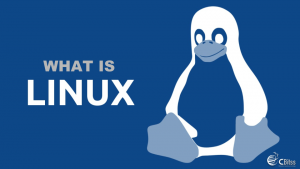From smartphones to vehicles, supercomputers and home appliances, the Linux operating system is all over the place.
Linux. It’s been around since the mid ’90s, and has since achieved a user base that term industries and continent. For those aware of everything, you understand that Linux is everywhere. It’s in your phones, in your vehicles, in your refrigerators, your Roku devices. It runs the most of the Internet, the supercomputers making scientific breakthrough, and the world\’s stock exchanges. Be that as it may, before Linux turned into the platform to run desktops, servers, and inserted systems over the globe, it was (and still is) a standout amongst the most reliable, secure, and worry-free operating system accessible.
For those not up to date, worry not – here is all the data you have to get up to speed on the Linux platform.
Much the same as Windows XP, Windows 7, Windows 8, and Mac OS X, Linux is a operating system. An operating system software that manages all the hardware resources connected to
Simply put, the operating system manages communication between software and hardware. Without an operating system, the software will not work.

Related Article
The OS is contained various pieces:
- The Bootloader: Software that manages the boot process of your computer. For most users, this will be just a splash screen that pops up and eventually goes away to boot in the operating system.
- The kernel: This is the one piece of the entire that is really called “Linux”. The kernel is the core of the system and conduct the CPU, memory, and peripheral devices.
- Daemons: These are background services (printing, sound, scheduling, etc.) that either start during boot, or after logging into the desktop.
- The Shell: You’ve most likely heard mention of the Linux command line. This is the shell – a command procedure that enables you to control the computer by commands typed into a text interface. This is the thing that, at one time, scared individuals away from Linux the most (Assuming that they had to learn a seemingly archaic command line structure to make Linux work). This is not true anymore. With present day desktop Linux, there is no compelling reason to ever contact the command line.
- Graphical Server: This is a subsystem that displays graphics on the monitor. Generally referred to as X server, or simply “X”.
- Desktop Environment: This is the piece of the puzzle that the users really interface with. There are numerous desktop environment to look over (Unity, GNOME, Cinnamon, Enlightenment, KDE, XFCE, and so forth). Each desktop environment includes built-in applications (file manager, configuration tool, web browser, game, etc.).
- Applications: Desktop environment don’t offer the full array of applications. Much the same as Windows and Mac, Linux offers tons of high quality software titles that can be easily found and install. Most modern Linux distributions (more on this in a minute) incorporate App Store-like devices that concentrate and simplify application installation. For example: Ubuntu Linux has the Ubuntu Software Center (Figure 1) which enables you to rapidly look among the a large number of applications and install them from one centralized location
The Ubuntu Software Center is the Linux App Store that carries thousands of free and commercial applications for Linux.
For More Information About Linux Than Join Cbitss Technologies . CBitss Provides Best Linux Training in Chandigarh Sector 34A.

